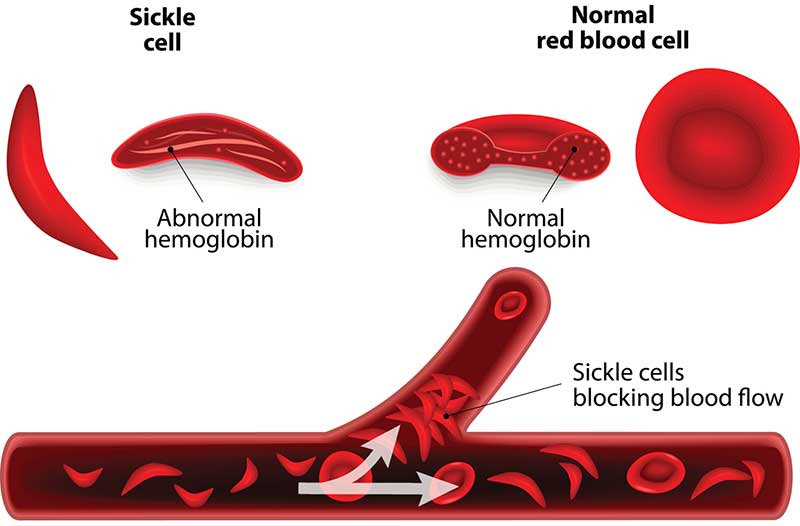Sickle cell disease is an inherited blood disorder caused by a mutation in haemoglobin; the red coloured protein inside our red blood cells. The sickle haemoglobin causes red blood cells to change their normal shape into banana-like shapes, which are unstable resulting in the cells breaking up easily, and blocking the blood vessels.
